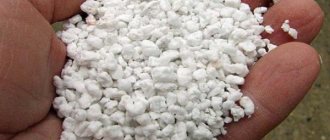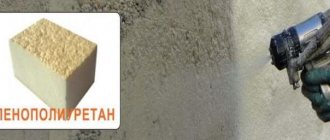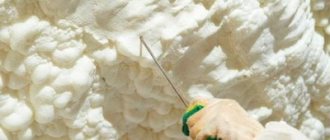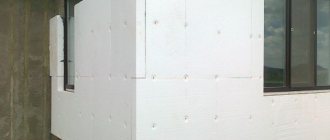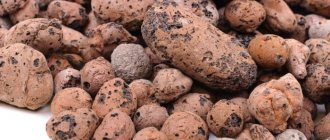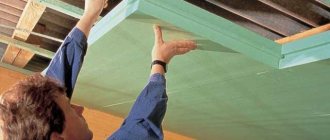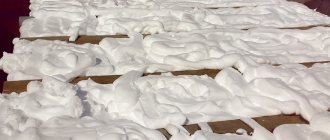Insulation of hangars with polyurethane foam (PPU). No condensation, no cold bridges, no leaks. With a 10 year guarantee on labor and materials. Services for owners of structures and installation organizations. We work throughout the European part of Russia.
We insulate frameless arched and frame metal hangars during operation or at the installation stage under warranty, we work according to a transparent scheme:
- thermal engineering calculation taking into account objective environmental and operating conditions (production workshops, warehouses, etc.);
- project and estimate;
- insulation of hangar up to 800 sq. m per shift in compliance with foam spraying technology.
Competent engineers, experienced foremen and operators are working on your task. You receive a guarantee of predictability and transparency of our actions, and we are responsible for the final result.
Thermal insulation of a hangar with polyurethane foam is the most profitable option. Polyurethane foam lasts as long as the hangar itself (50 years) and retains its thermal insulation properties in any season throughout its entire service life.
Depending on the purpose of the room, the required temperature conditions, and the power of heating devices, different thicknesses of insulation may be required. Unlike slab insulation, polyurethane foam can be applied in any thickness. For example, insulation of an industrial building in the central region of the Russian Federation is usually carried out with a thickness of 50-70 mm, while only 35-40 mm is sufficient to prevent the formation of condensation. If insulation of elements of apartment buildings is required, the recommended thickness of polyurethane foam can reach up to 100 mm.
DO YOU NEED SPECIALIST ADVICE?
Submit your application
What is a hangar made of corrugated sheets?
A hangar made of corrugated sheets is a lightweight frame made of metal structures, covered with corrugated sheets. The thickness of the corrugated sheet varies from 0.5 to 0.7 mm. Even with fairly large areas and dimensions, the weight of such a structure is small, since the hangar elements are mounted on a light foundation. The latter can be tape or pile. The type of foundation is selected based on the nature of the soil and the climatic characteristics of the area.
Hangars made from corrugated sheets are:
- Cold. These are canopies closed on all sides that prevent wind, rain and snow from getting inside.
- Warm. Insulated premises of complex design, which are suitable for permanent storage of goods and products, as well as for locating auxiliary industries, workshops or livestock complexes.
Roll insulation
When constructing hangars in our production, roll insulation is most often used (we work with trusted manufacturers URSA, Knauf). The products are characterized by high density, which allows for better insulation of objects with a large area, including those with non-standard geometry.
Insulation in rolls does an excellent job of maintaining temperatures inside the building. The advantages of this type include:
- — simple installation;
- — use on objects of any purpose;
- — resistance to external factors;
- - a light weight;
- — maximum adherence to surfaces;
- - low cost.
Twisted rolls are convenient to use for both external and internal insulation. There are materials that are designed specifically for lining pipes and communications.
Why is it worth insulating a hangar made of corrugated sheets with polyurethane foam?
A hangar made of corrugated sheets needs high-quality thermal insulation of the walls. The maximum effect can be guaranteed by high-quality polyurethane foam. Thermal insulation of hangars reduces space heating costs and creates a favorable climate for storing goods or carrying out the production process. Walls and openings are insulated with polyurethane foam. This solution provides many positive aspects:
- hangar heat loss is reduced;
- waterproofing qualities are improved;
- The hangar structure as a whole is strengthened.
Construction technology
The material used for the construction of frameless hangars is rolled galvanized sheet steel with a thickness of 0.8…2.0 mm. The construction process consists of three main stages.
Forming of rolled metal, first straight, and then curved with a certain radius of elements (panels) with stiffeners.
The connection of several panels (usually three) into arc-shaped segments, representing half a circle, the diameter of which is equal to the width of the building. That is, in fact, a short part of the hangar.
Installation of segments on a prepared foundation and connecting them to each other.
The sheet material is formed directly on the construction site using a special mobile roll forming machine. The continuous molding speed reaches 18 m/min.
All elements are connected to each other using a special electric beading machine. Assembly does not require any fasteners - bolts, screws, etc.
Accordingly, there is no need to make holes for them.
What are the benefits of frameless hangars? These buildings have many advantages.
First of all, low metal consumption due to the absence of a frame. This, in turn, leads to a low price. In some cases, the cost of a frameless hangar can be several times lower than that of a frame structure.
For the same reason, the structure has low metal consumption and is lightweight, which makes it possible to do without constructing a solid foundation. A frameless hangar can be installed on any ground.
Possibility of constructing large buildings - with a span of 10...45 m and an almost unlimited length.
Absolute waterproofness ensured by the assembly method itself without the use of fasteners.
Possibility to build both “cold” and insulated buildings.
Quite longevity - at least 50 years. This period is ensured by the use of galvanized metal and the absence of holes for fasteners, from which corrosion often begins.
Why insulate a hangar?
Insulating a hangar from corrugated sheets allows you to solve several problems at once:
- The potential possibilities for using the premises are expanding. An insulated hangar serves not only for storing material assets, but also for creating a retail outlet or administrative building.
- A favorable microclimate is created and maintained inside.
- The building is completely protected from negative environmental factors.
- The premises have a high level of protection against fire and chemical exposure.
Sheet insulation
Among sheet insulation materials, we will consider penoplex materials and mineral wool.
Penoplex (extruded polystyrene foam). For many years it has remained one of the most popular materials on the construction market. In essence, it is similar to ordinary polystyrene foam (known in everyday life as polystyrene foam). Penoplex is also made from polystyrene granules.
Penoplex is excellent for covering metal gates, between the outer and inner layers of corrugated sheeting.
Advantages of using extruded polystyrene foam for insulation:
- — low thermal conductivity (coefficient not higher than 0.03 W/m·ºK means a high degree of thermal insulation);
- — low moisture absorption (0.5% by volume per month);
- - high compressive and bending strength - 0.27 MPa (which allows the material to be used not only as insulation, but also as a building material that is not subject to structural cracking);
- — light weight (does not create additional load on the structure);
- — wide temperature range (does not lose performance properties from -50 to +75°C);
- — durability (up to 50 years);
- - ease of installation.
Mineral wool is produced from non-ferrous and ferrous metallurgy products; this material is considered environmentally friendly. It is recognized as a leader among others in such parameters as density, thermal conductivity, sound insulation, and fire safety.
The choice of mineral wool largely depends on the insulation tasks. So, if you need to cover the internal surfaces of a building, use a material with a hardness of 180 kg/m3; for external insulation work, use a stiffer mineral wool (200-240 kg/m3).
Why is insulation of hangars with mineral wool considered universal? An important advantage is that the material retains its qualities at any temperature, from the lowest to the highest. In addition, it is resistant to chemical and biological influences of the external environment, as a result of which it prevents corrosion on metal structures. At the same time, cotton wool can be used for any hangars, including when insulation of an arched hangar or frameless hangars is required.
As for the disadvantages of insulating hangars with mineral wool, this is the lack of moisture resistance, so you need to take care in advance that the wool does not get wet. Usually, during installation, the insulation is simply covered with a membrane film.
Noise insulation
Corrugated sheeting does not have sufficient sound insulation, so polyurethane foam is applied in several layers. This helps to significantly improve protection against the penetration of extraneous sounds inside the hangar. Sound insulation also significantly reduces the level of noise that can be heard from inside the room to the outside. Polyurethane foam for food storage warehouses, retail spaces, workshops, and livestock pens is not so important, but it has its place, since in these industries careful sealing of the space is necessary.
Production
The active development of industry requires the creation of new capacities and the modernization of old ones. Typically, this means creating optimal conditions for the production, labor and storage of existing products. With the tightening of energy consumption requirements, owners and business executives are faced with a difficult task: to make effective thermal insulation at minimal cost. Typically, work shops, administrative buildings and warehouse buildings are insulated. This issue is especially relevant given the rise in prices for energy resources and the reduction in funding.
Insulation of a hangar made of corrugated sheets with polyurethane foam (PPU)
PUF consists of two main components that provide its strong structure and excellent chemical properties: diisocyanate and polyol. These substances themselves are toxic, but when mixed under the influence of air they do not emit harmful substances and are safe for human health. PPU can be solid or foamed in its structure. The sprayed composition in the dry residue contains air in the cells up to 90%. This is facilitated by additional additives that improve the final characteristics of the insulation.
Ecowool
Environmentally friendly insulation, 80% composed of cellulose. Retains heat better than mineral wool. Low moisture permeability protects the exterior from condensation. A huge advantage of ecowool is that it retains its properties when wet.
The adhesive mixture (water + ecowool) adheres well to the surface and forms a high-quality coating without seams. There is no need to dismantle an already constructed building
The technology makes it possible to lay ecowool almost perfectly evenly and control the quality of installation. In addition, the insulating layer has a high density. Can be used as a basis for finishing the facade.
Features of applying polyurethane foam to a hangar made of corrugated sheets
The two components included in the foam are mixed in strictly dosed proportions. Under pressure, the mass is fed into the mixing unit of the gun, where homogeneous mixing occurs. A thin layer is applied to the base and after 1-3 seconds, layer-by-layer application is continued if required.
The foam increases in volume several times. This should be taken into account when calculating the required insulation thickness. When hardened, a monolithic thermal insulation coating is formed. The lower the density of polyurethane foam, the greater the increase in volume.
Installation work
The technology of insulation with fibrous and slab materials can be described in the following steps.
Frame installation
The frame is assembled from wooden slats (usually for foam) or metal profiles.
The frame is fastened to the walls either with self-tapping screws or with dowels; metal profiles can be secured to steel structures using wire and welding. The thickness of the frame elements must correspond to the thickness of the insulation sheets.
To prevent the accumulation of moisture inside the mineral wool layers, it is advisable to place a vapor barrier on both sides, and if the installation is carried out outside the walls, a windproof, vapor-permeable membrane. The films should be secured with slack so that thermal fluctuations in the dimensions of the hangar structures do not damage them.
The frame is usually located inside the building. However, to preserve useful volumes, it is possible to insulate from the outside, followed by cladding.
Laying slabs
Plates, sheets or rolls are laid between slats or frame profiles and secured. Possible joints are carefully sealed with scraps of the same material or polyurethane foam.
Facing
This is carried out not only to make the appearance more presentable, but also to prevent damage to the insulation. Another technology is used to apply a layer of polyurethane to the walls. The liquid composition is applied by spraying from special sprayers. Work must be carried out in protective clothing, and ventilation must be provided in the room.
After application, the composition expands on its own for some time and fills all the unevenness and cracks in the walls. The hardening time is about 1 hour. The result is a textured surface that can subsequently be painted with water-based paints.
What are the main pros and cons of insulation?
Pros:
- excellent thermal insulation of the entire hangar made of corrugated sheets;
- long service life;
- absence of joints and seams on the surface;
- high adhesion to the material;
- non-flammability;
- environmental friendliness and safety for human health;
- low level of moisture absorption;
- low weight.
Negative aspects include the need for additional protection from direct sunlight and the high cost of polyurethane foam. Hangars made of corrugated sheets must be additionally covered with decorative paint or siding.
How to extend service life
It should also be taken into account that polyurethane foam practically does not change its properties over time. The service life of polyurethane foam directly affects the durability of the finished product. To extend the quality characteristics of the material, it is necessary to reliably protect the coating from direct sunlight, since polyurethane foam is susceptible to ultraviolet radiation. No additional protective measures need to be taken.
The technology for insulating a hangar made of corrugated sheets with polyurethane foam is quite simple if you know the stages of this process and make the appropriate calculations. High-quality insulation can be achieved by accurately measuring the required amount of material and the thickness of the layers.
What to consider and what to pay special attention to
Please note that before starting insulation you need to calculate the amount of mixture that you plan to apply to the working surface. To do this, appropriate measurements are taken and the climatic component is determined. The parameters are correlated with each other and the thickness of the layers or one layer of polyurethane foam is calculated.
